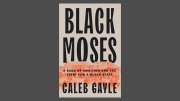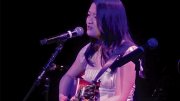Daniel Rockmore, Ph.D. ’89, is as likely to be found studying a Renaissance painting as writing equations on a blackboard. His unusual avocation—the digital authentication of art—lets him practice math in an intriguing setting. “There’s nothing more fun than being able to go behind the scenes at a museum,” says the Kemeny Parents professor of mathematics at Dartmouth College.
Rockmore uses wavelet analysis to look for an image’s mathematical “signature”: a set of points in 72-dimensional space. By comparing the signatures of works attributed to a particular artist, he can attempt to spot the fakes among the genuine articles.
His foray into the mathematics of art began five years ago at New York’s Metropolitan Museum, where a curator showed him around an exhibit of Bruegel drawings and explained how the artist’s way of drawing scenery, for example, could be distinguished from those of his imitators. Rockmore realized that with the right statistical tools, he might be able to pick out the same patterns from a digital image of the drawing.
 |
Joseph Mehling / Dartmouth College |
Daniel Rockmore (center) and his colleagues Siwei Lyu and Hany Farid have explored using wavelet analysis to authenticate art. |
With his Dartmouth colleagues Hany Farid and Siwei Lyu, he devised an algorithm that he likens to an Etch-a-Sketch in reverse. Where Etch-a-Sketch has up-down and left-right cursor knobs that together allow users to create pictures, their algorithm starts with the picture and tries to figure out how much up-down or left-right movement the artist used in each region. This wavelet analysis generates a cloud of points that appears to uniquely identify an artist’s style.
Art historians have greeted digital authentication with a mix of interest and skepticism. If the algorithm is reliable, it could be “an extremely powerful tool,” says the art historian Ellen Handy. But, she adds, “We will need to see a very large body of data before people in the profession will be able to change the way we’ve done [attribution] for more than a century.” Rockmore agrees that his goal should be to supplement, not replace, the expert eye of a connoisseur. “It’s a symbiosis,” he says, “not a conflict.” He hopes museums will allow readier access to their works, so that he can test his algorithms on more digital images.
Meanwhile, he has found other ways to combine science and art: producing documentaries about math and artificial intelligence, publishing a popular science book, Stalking the Riemann Hypothesis, writing essays for math-inspired art exhibits, and coauthoring a book on computers and music. He credits this open-mindedness partly to his Harvard mentor Persi Diaconis: “Persi’s never been afraid to use mathematics in all sorts of interesting contexts, where people might not think there’s really a math problem.”
Math and art have a natural connection, Rockmore believes, pointing to the ancient Greeks, who based their ideas of beauty on geometry, and to Picasso, whose Cubist style was inspired by writings about the fourth dimension. He considers himself lucky to be working at the nexus of both creative disciplines. “I’m a mathematician, but I like art,” he says, “and now I get to do them both.”
~Roberta Kwok





